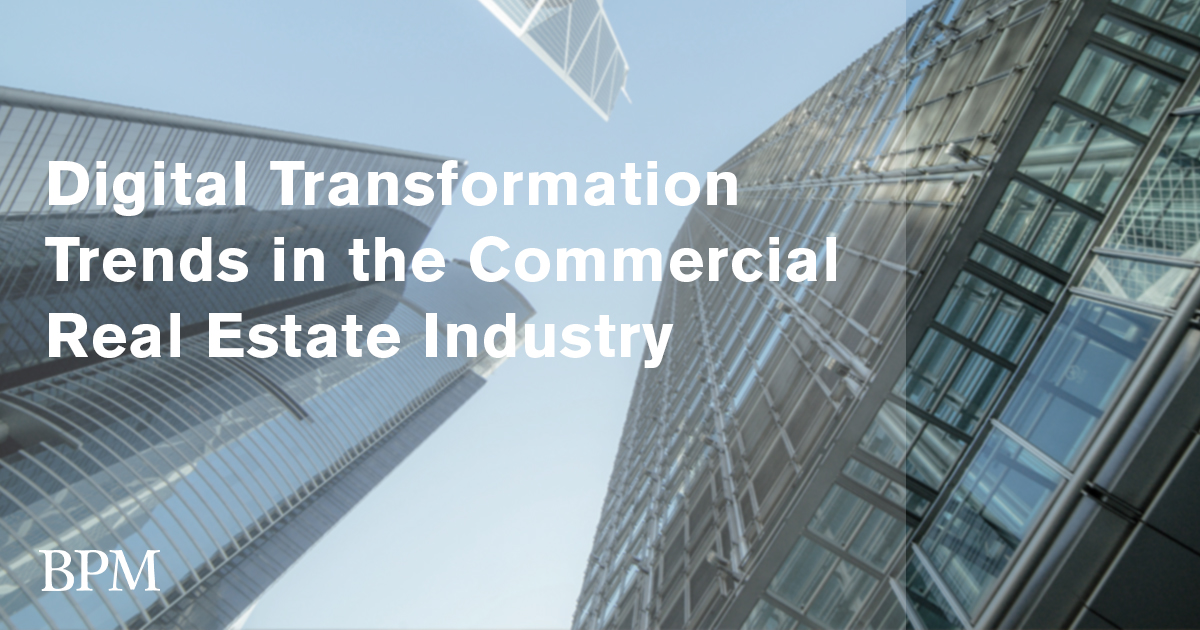INSIGHT
Commercial real estate: Digital transformation finally arrives
Michael Sellai • September 17, 2021
Services: Managed IT
Modern commercial real estate technology can help property managers cut costs, avoid catastrophes, improve efficiencies, and monitor operations in real-time, anywhere in the world.
By Michael Sellai, Partner, Advisory
There are many types of property owners. Some also purchase and manage residential buildings only; some are purely interested in commercial tenants. In any case, as professionals, they understand that these assets require money to maintain and improve. They budget for things like replacing windows or roofs every 15–20 years, or investing in new technologies like LED light bulbs to reduce energy usage and power bills. Depending on the location of the properties, they know they will need to spend money on snow removal, landscaping, and cleaning everything from parking garages to the windows on an office tower. Many of these companies are actively looking for new properties to add to their portfolio, to expand their foothold in different cities or attract different tiers of tenants.
For most of these companies, the majority of their non-acquisition investments go into either building new properties or else upgrading or refurbishing properties to modernize them or add new amenities. Many of these companies, surprisingly, do not consider the importance of investing in commercial real estate technology, which might see them missing out an opportunity for a digital transformation that could boost efficiencies, cut costs, and make their properties more attractive to a large group of potential tenants.
The most significant IT investment made by a majority of these companies is into a commercial real estate platform like YARDI. Yardi is a versatile software as a service (SaaS) that helps manage properties by keeping tabs on everything from vacancies, lease status and rent, to listings and prospective tenants, to maintenance and vendor relations. However, there are an increasing number of commercial real estate technologies that many tenants demand and that property owners use.
Chief among these services are items that secure buildings. These would be closed-circuit television cameras (CCTV) that can digitally record feeds for most types of properties. Security cards and scanners would likely be used for commercial properties to gain access to either the building, elevators, offices, or all three. Modern properties can also have extras like delivery lockers for shipments from online retailers, guest Wi-Fi, or even building management systems that automate equipment like lighting. All of these amenities and services rely on a stable network connection.
The Importance of IT
This is where many property companies make costly mistakes or face technical challenges. These companies devalue IT to their peril. When they focus on operational initiatives, it’s mostly around maintenance. So, as they grow and add properties to their portfolios, they hire vendors to outsource the installation for much of their IT. They may have one company install the CCTV system, another to handle the card scanners, and another to wire the building for internet. All this can lead to duplication or triplication (or more) of certain services, which is both inefficient from a cost and management perspective and also a potential security risk.
Here is a hypothetical example. A property owner has 15 buildings spread out across a major city. The company hires individual vendors to service all the properties, and one installs CCTV, one for card scanners, one for guest Wi-Fi. They all install their own equipment onsite. That means a router, modem, and internet connection, and possibly a phone line for each service at all 15 buildings. Stripping away the cost of just the vendor's service, the IT infrastructure being used could cost each building a couple of hundred dollars per month, not including the redundant equipment.
A strategic digital transformation project in this situation could simplify this setup and significantly reduce costs by consolidating all the systems under a single vendor. In this example, all three systems could be configured to function on one router, modem, and internet connection without disruption or service reduction. Cutting the service fees alone could save between $20–50,000 per year, while the redundant equipment could save as much as $300,000.
Commercial Real Estate Technology Trends: Automation and Remote Access
Property owners who embrace this commercial real estate technology trend toward digital transformation can find increased efficiencies for their automated processes and systems. A building that is securely connected to the cloud can be monitored after hours remotely. For example, a connected commercial building with a burst pipe on an upper floor over a long weekend could send an automated alert warning about the flood. The building manager could access the facility's control center remotely, turn off the water remotely, and notify a plumber remotely to come in for repairs and restoration services to reduce the impact on tenants. Without this technology, the flood might not have been detected for hours or days and could have caused catastrophic damage to multiple floors. Instead, the damage was contained by a manager using a mobile device while offsite.
If that example scares you as a property owner or manager, you may want to consider investing in include:
- Lighting and other electrical systems, emergency backup power
- Plumbing systems
- HVAC systems and rooftop units
- Fire alarms plus other emergency systems
- Elevators and similar mechanical systems
- Surveillance cameras and security systems
Of course, all this can only by reliably supported and managed with the help of a robust IT system.
Choosing the Right Equipment Is Key
One stumbling block to implementing much of this functionality is legacy systems. Frequently, building owners use cheap, consumer-grade equipment for their various services. They are relatively inexpensive plug-and-play devices. However, this is where these businesses need the services of competent IT professionals. Enterprise-level equipment offers significantly more functionality and can be configured and customized to fit the needs of your commercial real estate technology strategy. Plus, they offer far more system insights, dashboards and analytics. This can save significant time and money. For example, suppose a security camera went offline. A well-designed, commercial real estate IT stack could immediately notify the property manager, who could then run a diagnostic program to see the issue and have it repaired quickly. In a property burdened by legacy technologies, by comparison, it could take days before someone noticed the camera outage and longer to complete a work ticket.
Is Your Commercial Real Estate Technology Holding You Back? Let BPM Help.
The real estate sector is prime for a digital transformation. While there are obvious expenses related to it, the increased efficiencies combined with reductions of legacy or redundant systems will likely lead to notable cost savings. Monitoring and controlling critical systems can mitigate disasters, cut operating costs, lower insurance premiums, and make properties more desirable to tenants.
While this type of IT work might be overwhelming for many property management companies, the professionals at BPM have the technical skills and the industry-specific experience to get it done. With extensive experience modernizing and customizing IT and control systems for real estate companies of all sizes, we can ensure that all systems operate efficiently and in harmony. To learn more about how our digital transformation services for real estate companies, contact Michael Sellai, Head of our Managed IT Services and Partner in our Advisory Practice, today.

Michael Sellai
Partner, Managed IT Services
Michael has nearly 20 years of Information Technology experience and is a Partner in BPM’s San Francisco office. He helps …
Start the conversation
Looking for a team who understands where you’re headed and how to help you get there? Whether you’re building something new, managing growth or preserving success, let’s talk.
